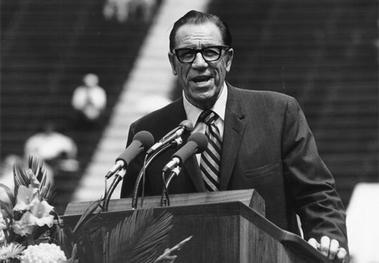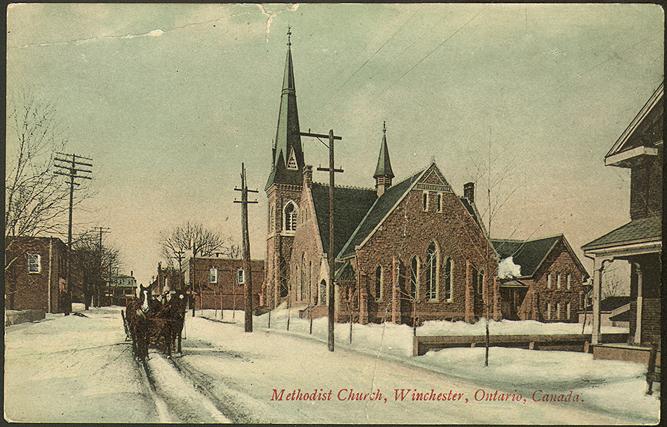by David Shanahan

Billy Graham Evangelistic Association.
It was in the church on St. Lawrence Street in Winchester, built by a former slave from the United States, that the world first heard the voice of a young man named George Beverly Shea, who would come to be known as “America’s beloved gospel singer”, and was considered “the first international singing ‘star’ of the gospel world”.

George was born on February 1, 1909 in Winchester, where his father was the minister in the local Wesleyan Methodist Church. There was so much history in that building, the work of Isaac Johnson, once a slave in Kentucky, later freed during the Civil War, who lived in Winchester for eight years in the 1870’s and built a number of churches, as well as the Town Hall in Morrisburg. Isaac died in 1905, just four years before George Shea was born in Winchester and spent his life singing of a different kind of freedom to which Isaac Johnson could also relate.
Aside from singing in the choir in his father’s church in Winchester, the young George Beverly Shea sang at various Christian camp meetings around the Ottawa Valley. George went to school in Winchester before moving to Ottawa when his father took up a parish there, finishing his education at Houghton College in New York, a Wesleyan College, now Houghton University. While working in the offices of an insurance company on New York City, George spent his leisure time working at a radio station, and that became his full-time job in 1938 in Chicago. He had been offered a job with NBC in 1933 singing hit parade songs on a national radio show called “Your Hit Parade”, but turned it down, as he didn’t feel comfortable singing secular songs. He was a host, interviewer, writer, administrator, and soloist on a program at a Christian station, WMBI from 1938 until 1944. In those years, he also sang on programs that were broadcast around the world, from Canada to China. In that time, two pivotal events had taken place in young Shea’s life.
In 1934, George married Erma Scarfe at his father’s church in Ottawa, and in 1940 he met a young preacher called Billy Graham, who had his own radio show in Chicago at WCFL. Graham invited George to sing on his program, beginning a relationship in ministry that would last for more than seventy years. When Billy Graham began his famous evangelistic meetings in 1947, George was part of the team, singing his way around the world with the Billy Graham Evangelistic Association, and, as a result, it is estimated that he sang live before more people than anyone else in history.
There was more to George’s musical career than the live meetings. Over the course of his life, he made more than seventy albums, was nominated for ten Grammy Awards, winning one in 1965. He found himself in impressive company in 2011, when he received the 2010 Lifetime Achievement Grammy Award alongside Julie Andrews, the Juilliard String Quartet, the Kingston Trio, Dolly Parton, and the Ramones!
He also wrote a number of the songs he sang at rallies and on radio, including one which dated back to his days in Winchester. His mother, who had taught him how to play piano, left a poem “I’d Rather Have Jesus,” by Rhea H. Miller, on the family piano and after reading the words he sat at the piano and composed the tune.
George was also involved in a number of movies through the Billy Graham organisation, including the very first film appearance of Irish actor, Liam Neeson. The future star of “Schindler’s List”, “Michael Collins”, and “Love Actually”, appeared as Christian in “Pilgrim’s Progress”, for which George was the narrator.
George Beverly Shea passed away on Tuesday, April 16, 2013, at the age of 104 after a stroke. The boy from Winchester, North Dundas, had travelled a very long way, was heard by millions of people all over the world, recognised by his peers in the music field, and had a long and remarkable life.

